At the moment, RWA is really hot.
From the Hong Kong Web3 Carnival in early April to the recent Web3 lawyer circle, everyone is talking about RWA. It is not without reason. After all, RWA is a more reliable and secure way to "issue coins".
A few days ago, Lawyer Mankiw talked with everyone about China's new RWA projects, such as "Mankiw Research | Decoding China's Mainland Characteristics RWA: Practical Characteristics, Risk Analysis and Optimization Path", and also shared with everyone how to play current RWA, such as "Mankiw | In the divided Web3 world, there are at least three types of RWA".
However, if we want to talk about the precedents and leaders of RWA, we have to turn our attention to the United States. The most representative one is probably Ondo. In particular, the U.S. Securities and Exchange Commission (SEC) met with it in the past two days to discuss the compliance issuance of tokenized securities, which really gave Ondo another big S on its report card.
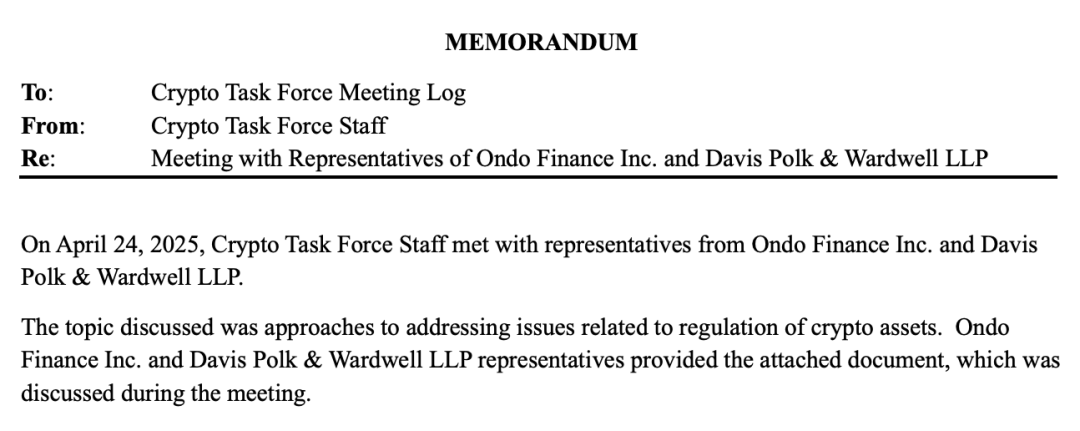
*Source: SEC filing screenshot
Therefore, in this article, Attorney Mankiw will talk to you about how RWA works in the United States based on Ondo’s RWA model.
Ondo RWA model dismantling
As for why Ondo is known as the leading RWA project in the industry, attorney Mankiw believes that the most important point is that when most projects are still thinking about "what real assets to use to issue tokens for financing", Ondo has already moved assets such as U.S. Treasury bonds and money market funds onto the chain and integrated them into the DeFi gameplay.
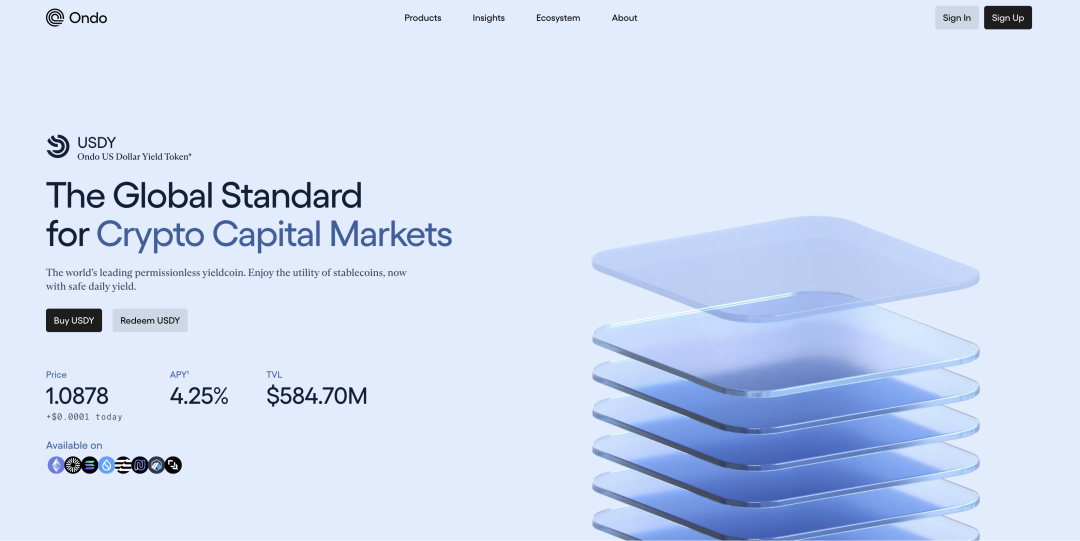
Take the Ondo US Dollar Yield Token (USDY) for example. The real assets behind it are short-term US Treasury bonds and bank deposits, which means:
First, the asset has real income support. USDY is essentially a yield-based stablecoin, and investors can enjoy the income from US bonds or bank deposits every day;
Second, transparency and security are guaranteed. The underlying logic of the asset, such as custody, auditing, and profit distribution, still follows the compliance standards of traditional finance.
In addition, USDY adopts a bankruptcy isolation structure, and the reserve assets are completely separated from the issuing entity. In the event of an extreme situation, investors have priority in claiming the reserve assets. In addition to USDY, Ondo also issued OUSG, which is anchored to the US short-term Treasury bond fund, and its logic is similar to USDY.
Therefore, attorney Mankiw believes that, to some extent, Ondo is more like moving traditional financial products and liquidation mechanisms onto the chain, while ensuring that returns and risks are controllable, it also provides liquidity to assets on the chain.
Speaking of asset liquidity, we have to mention another product of the Ondo team, Flux Finance.
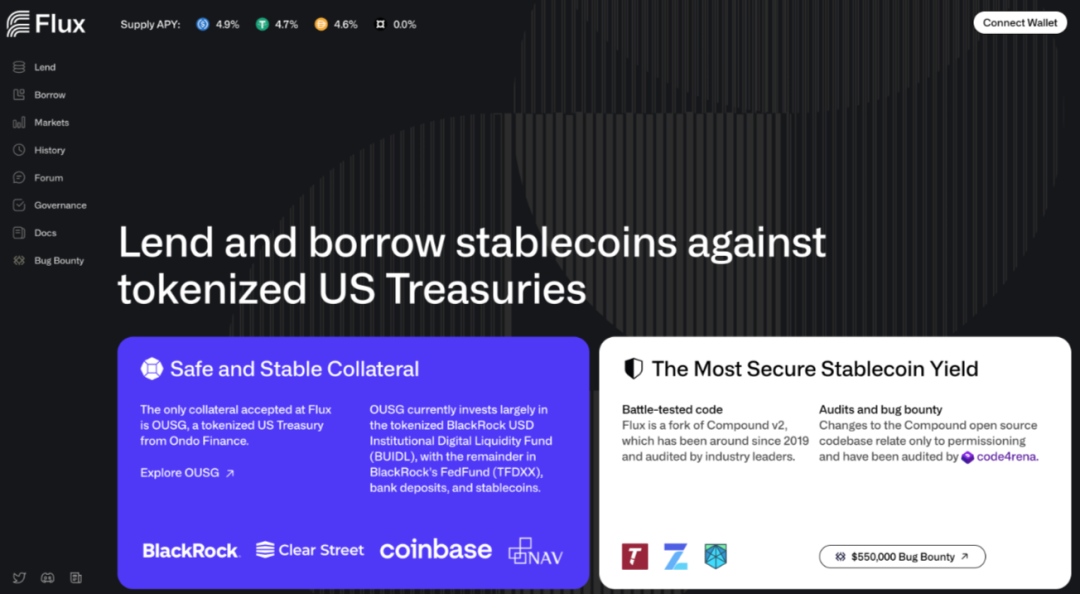
If issuing coins is only the first step of RWA, then how to make RWA tokens flow on the chain is the key to value-added. Therefore, Flux Finance was born, a lending protocol exclusively for RWA.
The difference between Flux and common lending protocols (Compound, Aave) is that it allows users to use these tokenized government bonds (such as OUSG) as collateral to borrow stablecoins such as USDC.
So, the question is: Treasury bonds are 100% securities. Will putting them in DeFi violate US regulations?
Ondo's solution is a licensing system: not everyone can use OUSG to borrow, you must pass a compliance review to ensure that you are a qualified investor. In other words, through a centralized review system, the disordered state of "any asset can be pledged" in DeFi is avoided, ensuring that on-chain lending activities are also carried out within a compliance framework.
This design is equivalent to setting a template for the compliance of RWA+DeFi on the entire chain in the future.
In fact, the gameplay of RWA is already a closed loop. However, Ondo is still expanding its territory in the field of RWA. Since RWA is so popular, all projects want to do RWA, so how to issue it and where to circulate it? There must be an infrastructure.
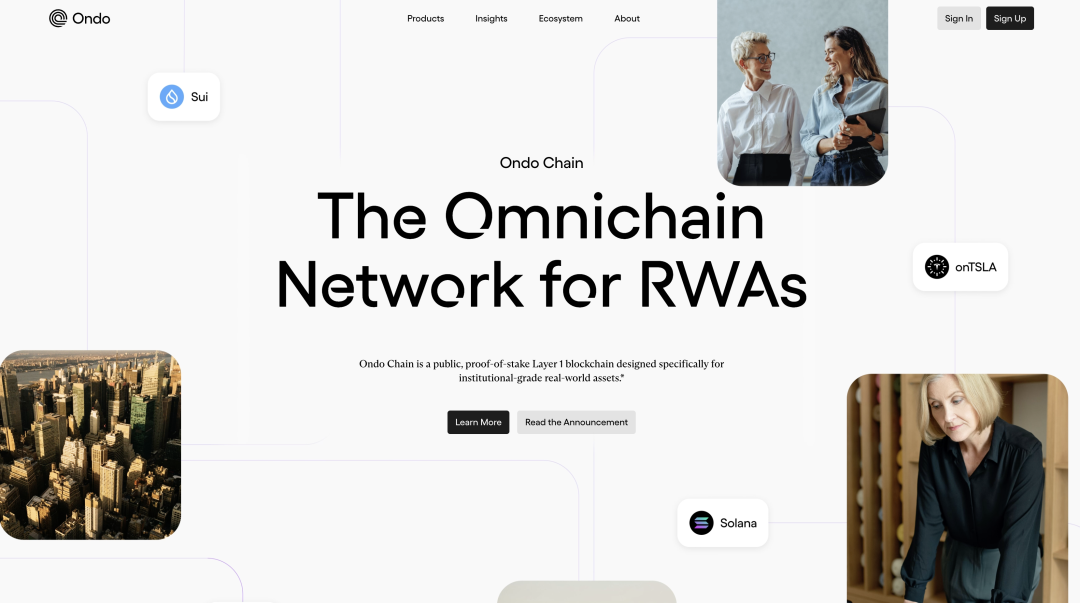
Yes, Ondo is also busy at the infrastructure level. It has built its own chain, Ondo Chain, which is tailor-made for RWA. The core gameplay is:
- Permissioned validators, traditional financial institutions such as Franklin Templeton and WisdomTree, serve as network nodes to ensure network security and compliance;
- Open application layer, any developer can issue RWA tokens and build dApps on this chain;
- With built-in oracle + cross-chain bridge, the asset prices and interest rates on the chain are directly fed by the verification nodes.
Such an architecture can not only meet the security and regulatory requirements of institutions, but also ensure the native openness of Web3.
Of course, with the infrastructure for everyone to issue coins, token standards must also be arranged. Therefore, Ondo announced plans to build Ondo Global Markets (Ondo GM) in 2024.
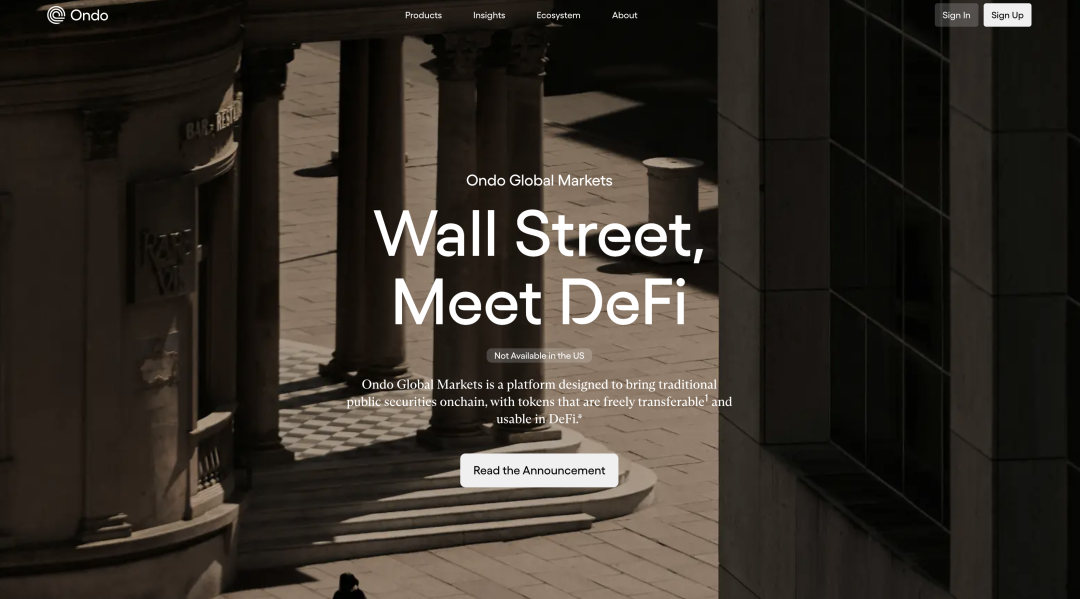
At the beginning, Ondo GM's design was relatively traditional, following the "brokerage instruction model". Tokens represented investors' position instructions issued by traditional brokerages, and were generally permission-based and closed.
However, according to an Ondo blog post in February 2025, after in-depth exchanges with developers, TradFi institutions, and US regulatory officials, Ondo GM is redesigning the tokenization framework to make RWA tokens similar to stablecoins, where the tokens themselves circulate freely, but the distribution layer has embedded compliance licensing logic. In this way, any token issuer can issue compliant and flexible RWA tokens through Ondo GM.
In summary, while others are still studying how to issue RWA assets, Ondo has already developed a full-link system for how to smoothly transplant RWA assets from the traditional financial world to the chain.
Ondo for US RWA
After discussing Ondo’s RWA model, let’s take a look at what problems Ondo has solved and what progress it has promoted in the US RWA industry.
Attorney Mankiw believes that this can be done from the following two levels:
Market Level
In the current industry, many people talk about RWA, and most of the narratives stay at the step of "helping traditional enterprises to issue coins for financing." But attorney Mankiw believes that the real value of RWA has never been just issuing coins. For high-quality assets, exploring RWA is to allow assets that already have value to obtain higher liquidity opportunities and utilization efficiency. The threshold is relatively loose compared to ABS, REITS, etc., and the programmable characteristics of tokens can be used to find more ways to activate asset combinations in the future. .
In this regard, Ondo's design has set a standard for the industry.
Whether it is the two RWA tokens it has already issued or the Ondo GM that is being built, they are all building a new financial market that circulates 24/7 and can be minted and redeemed at any time, breaking the traditional financial rule of "only opening during working hours".
Of course, circulation is only the first step. It is not that traditional financial products cannot be circulated, but their liquidity is often limited to specific time and specific platforms, and cross-market and cross-asset gameplay is basically locked. Just like you bought gold ETFs and bond funds, although these assets are "flowing" in your account, what can you do? At most, you can wait for the rise and fall, or change the platform to buy and sell. If you want to participate in some lending, income, derivatives and other gameplay, it is basically impossible.
Ondo's RWA design is to break down these "walls". Especially the DeFi gameplay, which can bring these tokenized traditional financial assets into various application scenarios on the chain. To put it bluntly, it is to reorganize and increase the value of these assets that were originally only "lying and making money" on the chain, which may be the direction to explore the true value of RWA.
Compliance level
The logic at the market level is actually very easy to implement, as long as you have the technology and funds. However, in the US market, if you want to move securities assets onto the chain, compliance is the key threshold, especially in the past few years when the US SEC has been pressing hard.
Therefore, Ondo’s ability to grow bigger and stronger under such circumstances must have something to do with compliance.
First, when visiting the Ondo platform, attorney Mankiw discovered that many products, such as tokens, could not be used under US IP. This means that Ondo has actively set limits on US users in product design to avoid the high-pressure areas of US regulation.
Of course, simply blocking US IPs is not enough. Because the anchored assets come from the US market, Ondo must strictly follow US compliance standards in the aspects of custody, auditing, and bankruptcy isolation that are directly linked to funds, even if the users are from overseas. Therefore, Ondo has taken measures in these aspects such as: entrusting assets to trust institutions regulated by the United States (such as Ankura Trust), strictly conducting licensing and qualification reviews for lending methods, designing a bankruptcy isolation mechanism, and protecting investors' priority claims.
But the problem is, now that we have overseas markets, what should we do with the American market?
In 2025, Ondo, in conjunction with Davis Polk law firm, negotiated with the U.S. SEC on the compliance of tokenized securities, which led to the "wrapped security token" solution mentioned by attorney Mankiw above, which is to embed permission control in the distribution layer, explore registration exemptions, market structure exemptions and other paths, and try to make tokenized securities find a legal landing space in the U.S. market.
In other words, Ondo used the existing compliance framework to steadily advance into non-US markets; on the other hand, it took the initiative to engage in dialogue with US regulators, trying to explore the possibility of implementing RWA asset compliance in a high-pressure environment.
Mankiw's Practical Advice
After talking so much, let’s get back to the most critical question: How does RWA work in the United States?
Attorney Mankiw's advice is: Don't fantasize about achieving everything in one go. Avoidance + exploration, balance + step-by-step approach is the most realistic approach:
First, the market is not short of products, but it is short of "ways to survive". The US securities market is large in size and has high asset quality, which is indeed an ideal pool for RWA. However, the regulatory barriers are also high, from securities laws, market structure, to brokers, and anti-money laundering, each link is a "minefield". Although the crypto-friendly SEC chairman is now in power, no one knows where the regulatory direction will turn next. Therefore, it is better to land in non-US markets first, and ensure that the asset side complies with regulations.
Second, we want to learn to design more ways to play, but we also need to pay attention to the boundaries. Especially DeFi, although there are many ways to play, but in the US market, the more fancy the way of playing, the more sensitive the supervision. In addition, don’t always think about the path of decentralization. Facts have proved that if you want to comply with regulations, you still need centralized participation, especially in high-risk scenarios such as lending and derivatives. Centralized restrictions make the gameplay safer and more transparent.
Third, have more dialogues with regulators and pave the way in advance. Don’t think about getting around it, because you can’t get around it. The US market has strong supervision. If you want to expand, you must have your own compliance layout, including cooperating with law firms in advance, or forming your own legal team, taking the initiative to talk to the US SEC, and exploring compliance paths.
In short, first dig the two major moats of market and compliance, and then slowly find a way to break through. Don't think about getting rich overnight.





